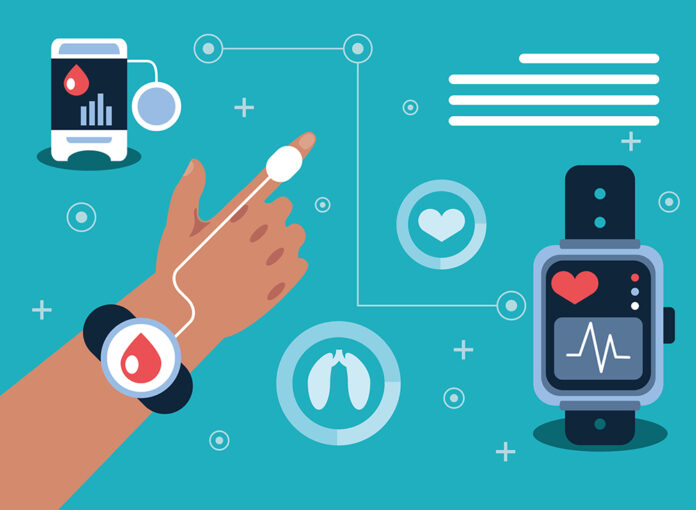The field of healthcare has seen remarkable advancements over the years and one such area that is changing the game is wearable medical devices. These are any apparatus or appliance which are worn on the body or incorporated into clothing and accessories to monitor and improve an existing health condition.
These devices use biosensors to collect biological data from a patient, including heart rate, blood pressure, sleep patterns, or blood sugar levels. These are typically used by individuals with diabetes, heart conditions, and hearing impairments, as well as those looking to follow their fitness performance.
The combined wearable technology market value was expected to be $28.3 billion and is expected to reach over $197 billion by 2030. This technology has revolutionized the way healthcare is now delivered and managed. This technology has been seamlessly integrated into our everyday lives and has revolutionized the way healthcare is now delivered and managed.
Applications of Wearable Healthcare Technology
You can now receive real-time health insights with this wearable technology and there is a demand for wearables to expand in the next few years. Some of the possible applications include:
Fitness and Wellness
There are around 67 million smart wearable device users in the US, making smartwatches and fitness trackers some of the most popular technology around. These are used to track physical activity and vital signs to help users maintain and improve their health and fitness goals. They can measure heart rate, steps taken, and other metrics like the number of calories burned.
Medical Treatment
Wearable electronic devices incorporate sensor optics to monitor vital signs and transmit biodata directly to healthcare providers. This technology has then been developed for use in medical health plans and equipment such as ECG monitors, insulin pumps, and hearing aids. These are useful for patients with chronic illnesses as they can provide alerts for timely medical attention.
Emerging Trends and Opportunities for the Future
There is a rising demand for wearables that is expected to continue over the next few years as consumer interest increases. By 2025, it is expected that smart wearable users will grow to 93.7 million with particular focus being placed on biosensor technology and textiles. This is to create smart clothing to create garments that monitor all sorts of health data and activity levels.
There is also the opportunity to revolutionize healthcare by using virtual reality tech that can be used in pain management, surgical training, and mental health treatment. Not only will this impact the way that patient’s pre-existing medical conditions are managed but can encourage others to make healthier lifestyle choices.
Read Also
- Ketamine-Assisted Therapies: Impacts on Employee WellbeingWorkplace stress is common today. Many employees feel tired, anxious, or burned out. Regular therapy can help, but some people need more support. Ketamine-assisted therapy is showing good results for mental health. A ketamine-assisted therapist guides each session safely. This therapy can improve mood, focus, and energy. Learning more about it can help teams stay… Read more: Ketamine-Assisted Therapies: Impacts on Employee Wellbeing
- The Future of Men’s Health: Why Telehealth Is Here to StayTelehealth isn’t just a pandemic trend that faded into the background. For Australian men, it has become one of the most practical, time-saving, and stress-free ways to manage everyday health — and it’s shaping the future of how we access care. Platforms like DOCTO, an Australian online doctor and specialist telehealth service, are leading the… Read more: The Future of Men’s Health: Why Telehealth Is Here to Stay
- How to Build a Simple, Clean Skincare Routine ?You don’t need a complicated skincare routine. It doesn’t have to be something that requires twenty different products and confusing steps. Your routine works well with just a few high-quality clean ingredients. The beauty industry keeps pushing more products, but your skin actually needs less. You only need a simple approach to get better results… Read more: How to Build a Simple, Clean Skincare Routine ?
- How Preventive Dental Care Supports Overall HealthHave you ever wondered how a simple dental checkup could impact your entire body? Oral health is more than just a bright smile. Studies show that poor dental habits can contribute to serious health problems. Gum disease and tooth decay are linked to heart disease, diabetes, and infections. Yet, many people overlook preventive dental care.… Read more: How Preventive Dental Care Supports Overall Health
- Seeing Clearly in a High-Tech World: A Deep Dive into Advanced Vision Care ServicesProtecting your eyesight isn’t optional—it’s essential. Modern eye care has evolved far beyond basic exams, offering advanced diagnostics, personalized treatments, and surgical innovations that keep vision sharp for life. A leading example is Intermountain Eye Center, home to specialists like Dr Fishburn Boise, where patients receive comprehensive, high-level vision care designed to preserve long-term eye… Read more: Seeing Clearly in a High-Tech World: A Deep Dive into Advanced Vision Care Services
- Why the Keto Diet Works for Some People—and Fails Dramatically for Others: An Ayurvedic Breakdown for Modern HealthcareThe keto diet has dominated weight-loss culture for years. For some people, it produces rapid fat loss, stable energy, and improved mental clarity. For others—especially those who gain weight easily—it leads to burnout, digestive distress, rebound weight gain, high cholesterol, and a metabolism that feels slower than before. Healthcare often frames this as a discipline… Read more: Why the Keto Diet Works for Some People—and Fails Dramatically for Others: An Ayurvedic Breakdown for Modern Healthcare







